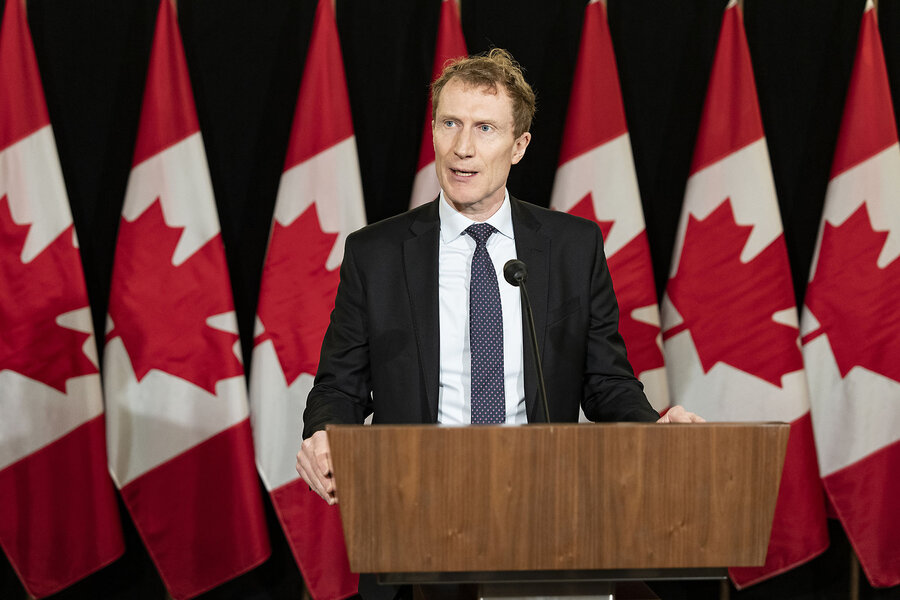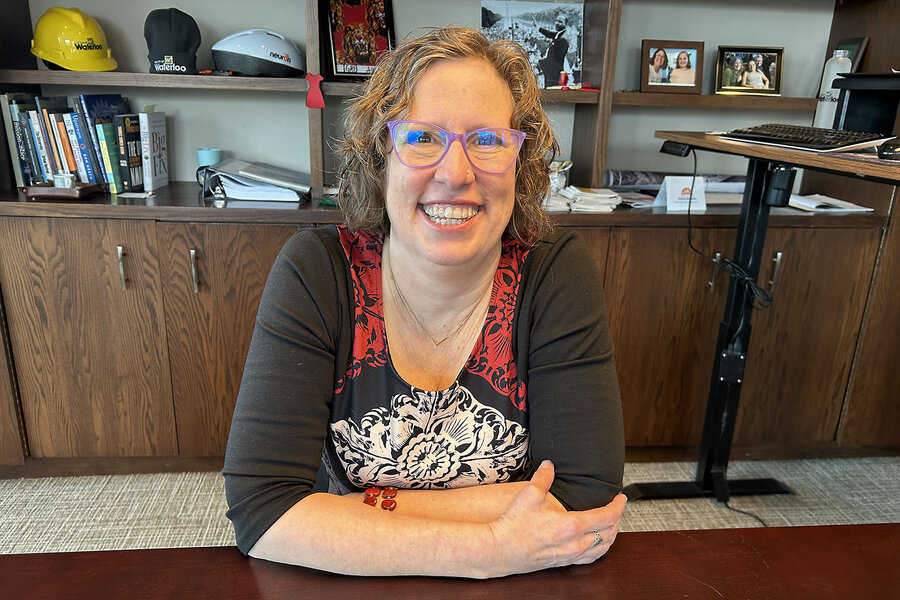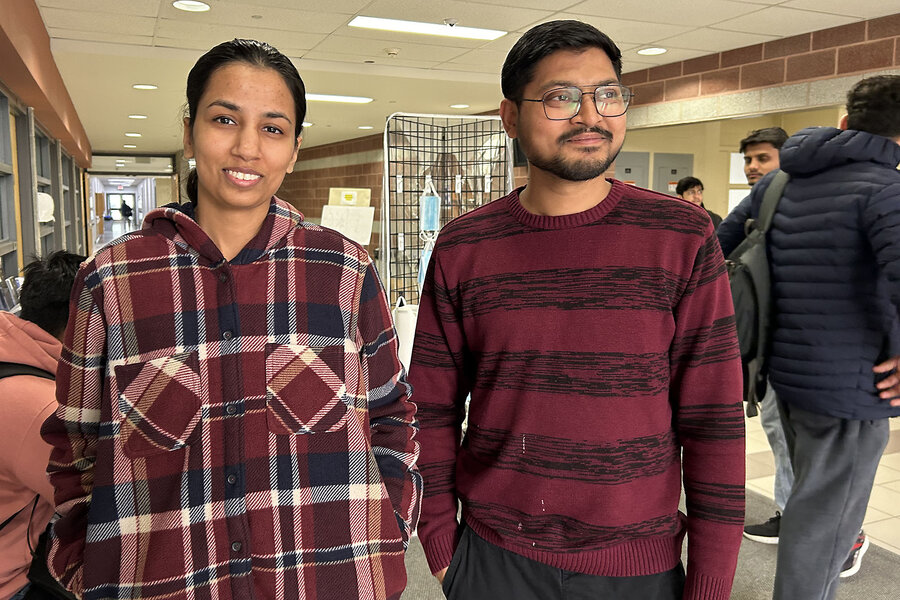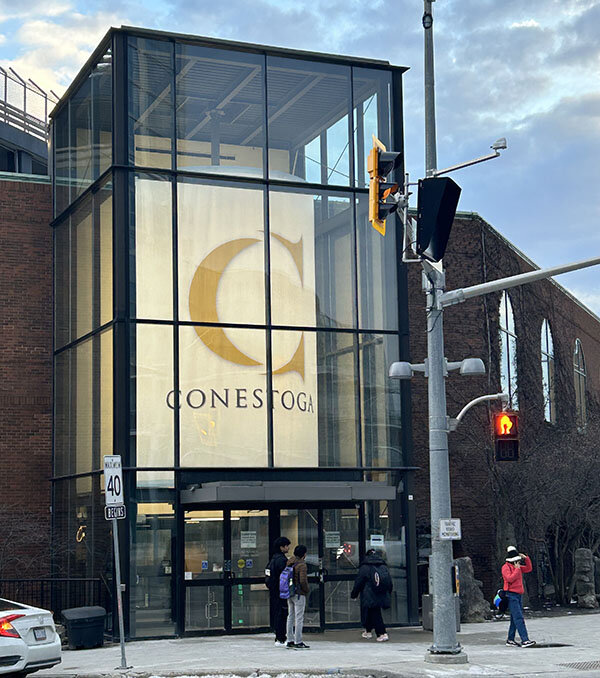Canada is a role model on immigration. But many Canadians feel it’s lost its way.
Canada is experiencing a population boom unlike any time since the 1950s. It’s the fastest-growing G7 country, driven by immigration. It also faces the largest housing shortage in the G7.
And now, many here worry that the pace of arrivals of both permanent residents and foreign students and workers is overtaking the country’s capacity to house, educate, and employ all.
Why We Wrote This
A story focused onCanadians have trusted that their immigration system would let people into the country in a manner that would benefit all. But amid a record influx, the balance seems to be out of whack and trust is eroding.
As the number of foreign students has tripled in the past decade, the federal government recently issued a cap on study permits for the next two years. It also announced last week that it will, for the first time, set new targets for temporary residents overall.
According to recent polling, 44% of Canadians say they agree that “there is too much immigration to Canada.” That’s a 17-point increase from the year before and the largest one-year change the pollster has seen since surveys began in 1977. Among the groups expressing the highest jump in concern: first-generation Canadians.
“Canada has historically been a model for the world of how to do immigration. And the best indicator of that is the long-standing, broad consensus on support for high immigration levels,” says Mikal Skuterud, a professor of economics. “The system needs to go back to being something very predictable, very transparent.”
The bright headquarters of ApplyBoard effuses the spirit that has long defined Canada’s immigration narrative.
Founded in 2015 by three brothers from Iran who came to Canada as international students, the company has taken its place in the tech cluster here, touted as the second largest in North America after Silicon Valley. As the brothers seamlessly gained permanent residency and later Canadian citizenship, they built one of Canada’s fastest-growing tech businesses.
Unlike in the United States, where immigration politics often descend into dysfunction, Canada’s immigration program has been built on long-standing trust that it’s a win for all.
Why We Wrote This
A story focused onCanadians have trusted that their immigration system would let people into the country in a manner that would benefit all. But amid a record influx, the balance seems to be out of whack and trust is eroding.
“We’re lucky to work in the most diverse company, I would say, in Canada,” says ApplyBoard CEO Meti Basiri. Around him are walls splashed in colorful murals and counters stocked with free snacks, including, on one, a giant slab of demolished yellow birthday cake.
But Canada is experiencing a population boom unlike any time since the 1950s. It’s the fastest-growing G7 country, almost all driven by immigration. It also faces the largest housing shortage in the G7.

Christinne Muschi/The Canadian Press/AP
Canadian Minister of Immigration Marc Miller announced in January a two-year cap on international student permits to ease the pressure on housing, health care, and other services at a time of record immigration. He also announced in March upcoming targets to reduce the number of temporary residents.
And now, many here worry that the pace of arrivals of both permanent residents and foreign students and workers is overtaking the country’s capacity to house, care for, educate, and employ all.
As the number of foreign students has tripled in the past decade – a segment of the population that ApplyBoard has built its success on – the federal government recently issued a cap on study permits for the next two years. It also announced last week that it will, for the first time, set new targets for temporary residents overall. The moves are controversial. They’re also the largest indication so far of a larger rethink of the growing imbalance in the immigration system.
“Canada has historically been a model for the world of how to do immigration. And the best indicator of that is the long-standing, broad consensus on support for high immigration levels,” says Mikal Skuterud, a professor of economics at the University of Waterloo. “And I’m ultimately concerned because I think there’s a risk of undermining that. ... The system needs to go back to being something very predictable, very transparent.”
Trust in the system
Historically, newcomers have been trusted in Canada because the system carefully selects economic immigrants through a point system based on criteria like age and education. Most Canadians see permanent residents as highly skilled professionals – doctors, tech workers, university professors – who help the country prosper.
Prime Minister Justin Trudeau announced last year that 1.5 million new permanent residents will be welcomed by 2026, part of an increasing volume since he took office in 2015. At the same time, the number of temporary residents has surged, to 2.6 million according to new census figures released today. Many are incentivized by the prospect of permanent residence.
But now several recent polls capture mistrust brewing over the pace of immigration. According to a poll by Environics Institute, for example, 44% of Canadians say they agree that “there is too much immigration to Canada.” That’s a 17-point increase from the year before and the largest one-year change the group has seen since polling began in 1977. Among the groups expressing the highest jump in concern: first-generation Canadians, up by 20 points.

Sara Miller Llana/The Christian Science Monitor
Waterloo Mayor Dorothy McCabe, shown here in her office, is worried about recent polling that shows growing distrust about the pace of immigration in Canada.
The Waterloo region, birthplace of the BlackBerry, exemplifies the best of Canada’s immigration story. Its universities, startups like ApplyBoard, and artificial intelligence industry rely on the “best and brightest” to drive innovation.
But questions over the pace of immigration are also swirling here.
The region received 27,840 immigrants between 2016 and 2021. That’s nearly double the previous five-year period, according to census data, making it one of the fastest-growing in Canada.
In the context of a national housing affordability crisis, residents like Gary Coulson, a car mechanic in Waterloo, say they are concerned. Five years ago, Mr. Coulson says, he had no complaints about immigration. Neither did the owner of the auto shop where he works, Romesh Dissanayake, who arrived from Sri Lanka in 2018 and is now a permanent resident. But today, both men complain of “uncontrolled immigration” that has put pressure on rents and jobs and leaves newcomers vulnerable to exploitation.
“There is not enough housing for who have already landed. And there are more coming,” Mr. Coulson says.
The housing crisis is far more complex than growing demand from immigrants. But Waterloo Mayor Dorothy McCabe says building more housing is key to moving forward. And ultimately she is worried about how affordability pressures might shake Canada’s sense of immigration and itself.
“We do want to make sure that we remain a city and a region and a country that says immigrants, whether they’re refugees, [permanent residents,] or students, are welcome,” she says.

Sara Miller Llana/The Christian Science Monitor
Tanvi Mevada (left) and Digesh Patel, two Indian students studying at Conestoga College, say they hope to become permanent residents, but they’ll need to return home if they can't find jobs in their field after graduation.
Education in focus
The international student cap might seem hostile to international students on the face of it, but for many it’s a lesson in how Canada is trying to restore broken trust in its system.
International students, coveted by institutions facing tuition freezes, pay far more for their education than Canadian residents. That has spawned some fraud in the industry. Immigration Minister Marc Miller said in January that the cap – and other rules – would rid the industry of “puppy mill” colleges that offer subpar education with promises of fast-track permanent residence.
On a recent day, Digesh Patel mingles with friends at the Doon campus of Conestoga College. His college has been in the spotlight since the federal government announced the cap in January, which is expected to reduce foreign student enrollment nationwide by 35%. Conestoga College has, according to CBC News, received the most international student permits in the past five years.
Mr. Patel, from India, is in a 16-month electrical automation program in which none of the other students are Canadian. He funds his stay working as a security guard and at an Indian grocer, and counts himself fortunate to have found a job. He is the first to support the new rules because he says there are simply too many students for not enough jobs. “When we heard about Canada, it was completely different than what we found when we arrived,” he says.
But ApplyBoard CEO and Conestoga alum Mr. Basiri worries about how the cap will impact Canada’s brand. “It sends the message that we’re not as welcoming as we used to be,” he says. “Canada has been saying, ‘We want you. We value diversity. We care about you. Come to this country irrespective of where you are from.’
“Now, all of a sudden we send a message that international students are causing our housing issue. International students are affecting X, Y, Z.”

Sara Miller Llana/The Christian Science Monitor
Conestoga College, whose downtown Kitchener campus is shown here, received the biggest number of international student permits in Ontario, according to a CBC News analysis. The government just placed a cap on such permits.
How to restore trust
Dr. Skuterud criticizes the student cap as “politically expedient” and a “blunt instrument.” But he says Canada can course-correct, in both quantity and composition of immigration.
Particularly since 2021, the government has prioritized low-skilled workers to plug labor shortages – an economic policy he disagrees with because he says it puts downward pressure at the bottom and increases inequality. “Working people then start to look at immigrants not as people who are making their lives better, but people who are competing for housing and jobs,” he says.
That’s what polarizes the immigration debate in the U.S. and Europe.
He says policies that give pathways to students and foreign workers to gain permanent resident status – and allow students to work long hours while they study to subsidize stays – create bad incentives. Foreign students, unable to pay rents, have crammed into housing; some are accessing food banks.
Dr. Skuterud gets asked if he’s anti-immigrant. He is adamant that he feels the opposite: “If you care about immigration,” he says, “you should be concerned about the direction we’re moving in.”
Sociologist Anna Triandafyllidou, the Canada Excellence Research Chair in Migration and Integration at Toronto Metropolitan University, says Canada remains a global model when it comes to immigration. But Canada is not immune to anti-immigrant rhetoric – including disinformation – coursing through politics in the U.S. and Europe. And the dip in support here concerns her.
“Multiculturalism, I like to say, is like a marriage. If you want to make it work, you have to keep working on it. You can’t say, ‘Oh, we fell in love, we got married, and now we’re good.’ No, you have to keep it alive,” she says. “Migrant integration is a work in progress. And the proactive, positive narrative is a work in progress.”
